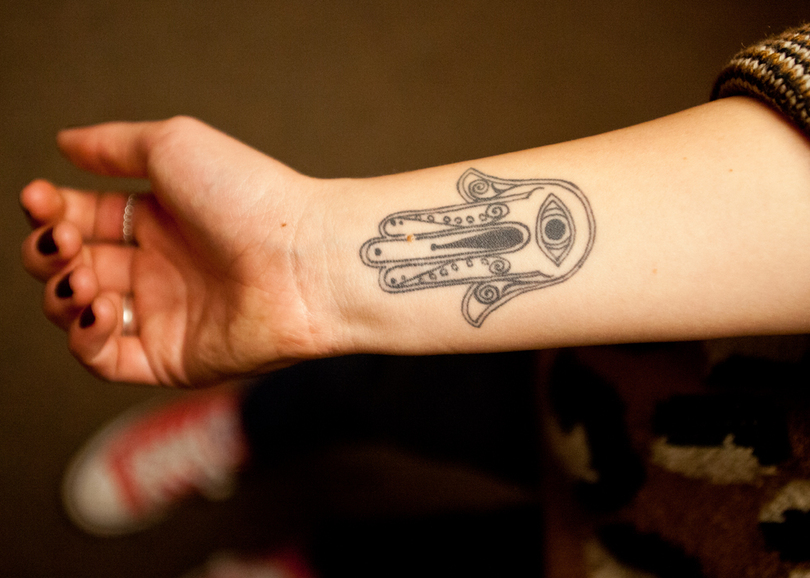Tattoo Tuesday: Debbie Lechtman

Debbie Lechtman, a senior magazine journalism major displays her hamsa. Luke Rafferty | Asst. Photo Editor
Maneuvering the sidewalks of Syracuse University, senior magazine journalism major Debbie Lechtman said she is always protected from evil, thanks to the custom-drawn Hamsa on her inner right forearm. Lechtman’s relationship with the popular symbol can be traced back to her cultural roots, quasi-religious beliefs and trying childhood.
Stemming from areas of the Middle East and North Africa, the Hamsa, which literally means “five fingers of the hand” in Arabic, is an amulet associated with the belief of divine protection — most particularly from the dreaded “evil eye.”
Today, the Hamsa is a well-known image, and has become a modern spectacle of art, culture, fashion and in this case, a permanent piece of body imagery.
Lechtman first became familiar with the Hamsa symbol when she was young. Having been primarily raised in her father’s home country of Israel, Lechtman was exposed to the image frequently, and it soon became her icon of defense against the evils that subdued her.
Growing up, Lechtman had a tumultuous relationship with her mother, who suffered from a mental illness. Her mother was often abusive, though Lechtman said she viewed her mother as her sole protector. But when her mother and father turned on her, Lechtman said she sought other means of protection and comfort.
“I had a really difficult family life early on,” she said. “I never thought why I was drawn to this particular symbol when I was younger, but I guess when the people who are supposed to protect me most turned the blind eye, I had to find something else, and my Hamsa and Nazar charms were always there.”
Lechtman’s enduring relationship with her mother ended the summer before her junior year of college, after her parents divorced, but the Hamsa symbol has stuck with her ever since.
Upon returning to SU for her third year of college, Lechtman had her sister, an art student, design a custom Hamsa that she then brought to Halo Tattoo. After 30 minutes under artist Mike Tommyrot’s gun, the Hamsa was complete. From then on, Lechtman said she has been permanently protected from evil forces.
Lechtman’s tattoo is a cumulative representation of superstition, culture and religion. She said she greatly respects the mysticism that lies within the symbol she bears, and even sports jewelry of a similar symbolic nature.
Said Lechtman: “The Hamsa may be a popular image today, but it’d been my protector since I was 5. It’s a symbol that transcends all religions and has meant something to me my entire life.”




